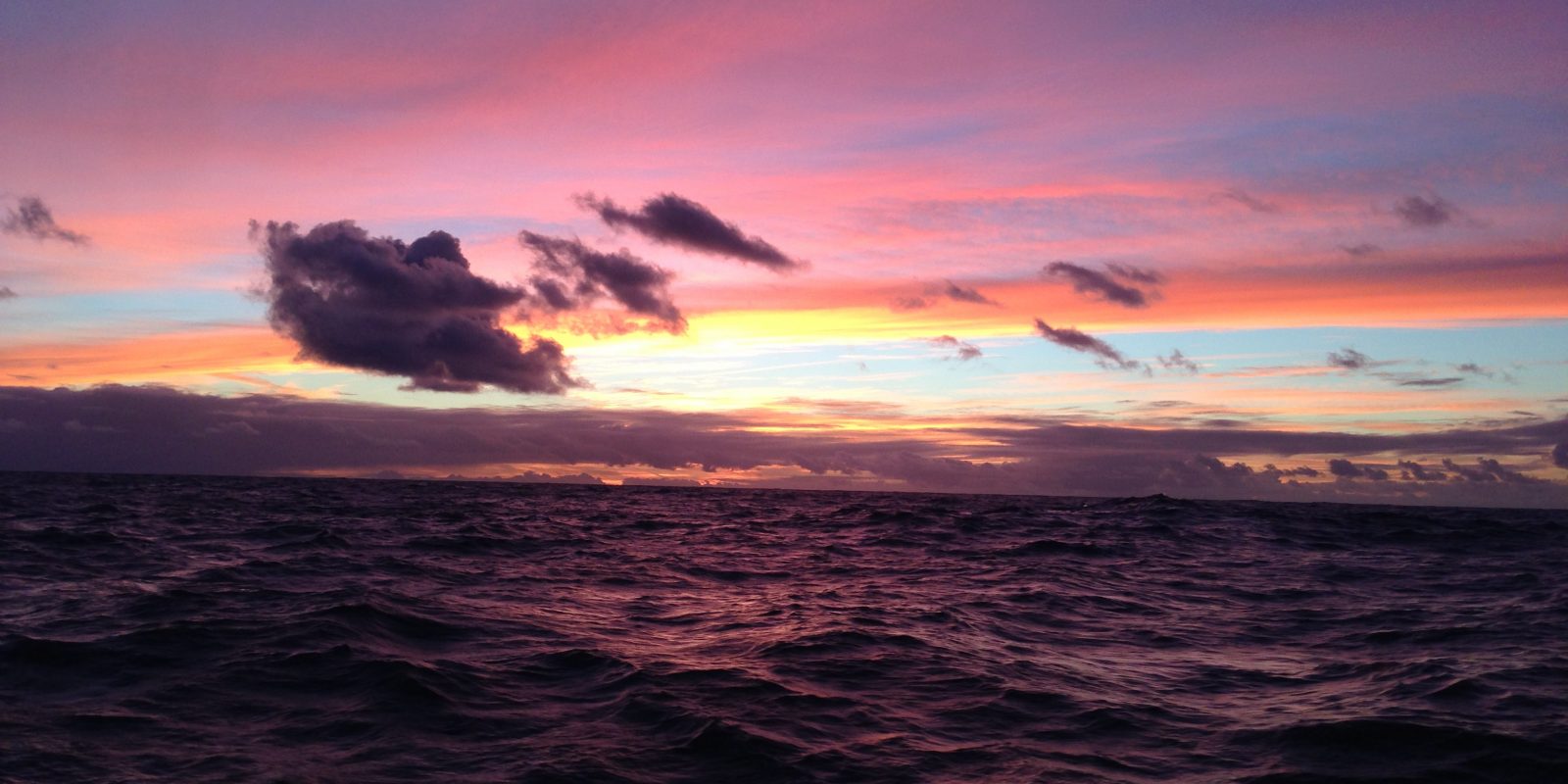Giddy with land, cold drinks and wifi, and full of a sense of achievement, our first few days in Martinique were busy. As the crew started to disperse, we continued to come together on Sea Dragon for a number of events. We have welcomed the other Atlantic Odyssey boats as they came in, and have partaken in the welcome parties of course! We have also been asked to host to four Martinique school groups. It was a joy to show them the nooks and crannies of Sea Dragon, and ask whether they would like to sail across an ocean on her. The answer was of course a resounding ‘Oui!’ There were definitely some future explorers in that group… also perhaps some environmentalists. Many wide-eyed faces listened as we told them the story of plastic. One young girl asked, baffled, at the end, “But why is there plastic in the ocean?”
I think all of us on Sea Dragon can understand that sense of confusion. There is something quite disorientating about pulling tiny, colourful pieces of micro-plastic out of the middle of the Atlantic. And similarly, trying to get to grips with what impact these pieces are having on the sea itself, the creatures in it, and our own personal health. These are the layers that we have been trying to tease out on this trip, and what each one of us – on a personal level – can do.
One of the most personal things about this trip has been our Body Burden test. Really looking inside our bodies to see, intimately, what effect pollution can have on each of us. The day after arrival, we were greeted by Dr Anna Kärrman, who was waiting for us in Martinique. Anna was the scientist who conducted our tests at Örebro University, and although we received the results whilst at sea, we needed an additional explanation to make sense of the results. For those of us who had seen our results spike on a number of the graphs, the idea of hidden chemicals has been much on our minds.
So, enter Anna. Together we sat on board, under our makeshift canvas to block out the Caribbean sun, and listened to her talk about her work in Sweden – particularly in recent times researching the levels of chemicals in fire fighting foam and their impact on health. Through her work with the UNEP Safe Planet campaign, she has been collecting a database of Body Burden results across the world, looking particularly at the levels of persistent organic pollutants (POPs) in our blood. POPs are highly toxic, they bioaccumulate and they biomagnify in the foodchain. This means they hang around in your body rather than going away and build up over the lifetime. The factors that impact the levels of POPs include age (if you are older you are more likely to have more POPs in your body), diet, sex (women who have given birth tend to have less, due to the chemicals passed on to the foetus), and environment (i.e. occupation, hobbies, home etc).
For our Body Burden test, we were tested for 35 chemicals, of which 29 were found. The first group that we discussed was pesticides, which includes DDT. The problems associated with these chemicals were highlighted in the 60s – particularly through Rachel Carson’s seminal Silent Spring – and a number of restrictions and bans were introduced in the 70s. Therefore it was unsurprising that it was the older members of our group who had the highest levels of these kinds of pesticides. Other groups of chemicals we were tested for included PCBs, dioxins, perfluorinated chemicals, and PBDE. Overall, we all fell below the average with only a few exceptions. For example, Emily had high levels of PBDE – perhaps due to her time handling burning waste in the Pacific.
However, regardless of amounts and personal variations, what was startling was that these chemicals were found within all of us. Without exception! And right now, there is no way to know what effect these combinations of chemical are having on health. Scary.
So the conversation ended with a discussion about what we can do. And what that seemed to come down to is consciousness. We can be conscious of these chemicals. We can read the labels of what we buy and try to avoid them where we can. We can stay away from the kinds of food that is known to have high levels, like top predator fish. And most importantly, we can talk about the problems and try to find solutions, in whatever fashion suits us best. We can say, “hang on, we want the basic human right to choose to live in a chemical free environment” And we can communicate this through lobbying, or policy making and through storytelling and art. Through writing, speaking or adventuring.
But the most important thing is to keep having the conversation. Keep looking, rather than turning a blind eye.
By Laura, eXXpedition Artistic Director

